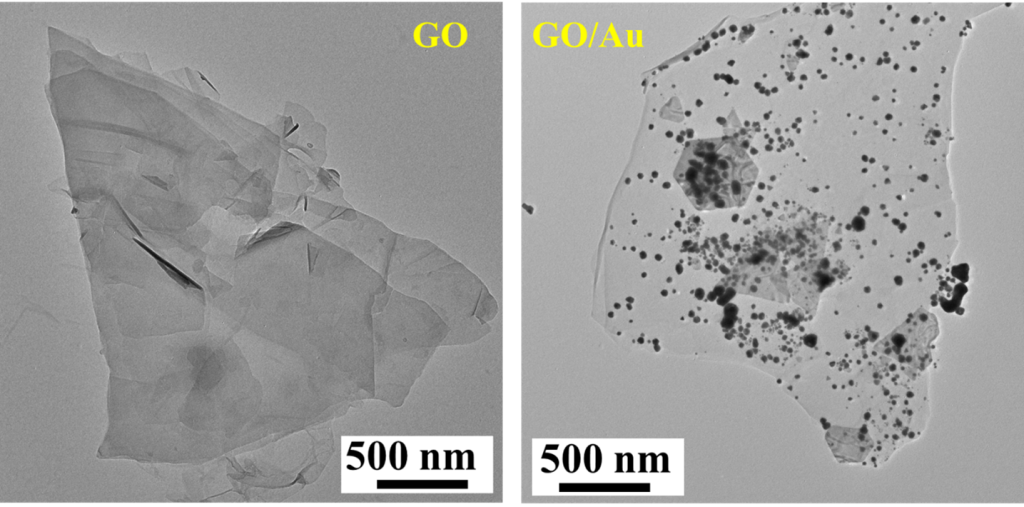
Nanocomposites are the heterogeneous materials that are produced by the mixtures of polymers with inorganic solids that are multi-phased with two or three dimensions of less than 100 nanometers (nm). Nanocomposites offer advanced technologies in enhancing several industrial sectors like automobile, construction, electronics and electrical, food packaging, and technology transfer, yet its sustainable and environment-friendly nature provides a great deal for mankind. Dr Imran Uddin, Post Doctoral fellow, Department of Physics, has published a paper titled “Bioinspired GO/Au nanocomposite synthesis: Characteristics and use as a high-performance dielectric material in nanoelectronics” in the South African Journal of Botany, having an impact factor of 3.11. The paper demonstrated that GO-based materials are better constituents for nanocomposite synthesis and facilitate in enhancing the performance of electrical devices and energy storage systems.
Abstract
A bioinspired method was used to synthesise a graphene oxide (GO) based noble metal (Au) nanocomposite (GO/Au nanocomposite) using chemically exfoliated graphene oxide as the base matrix and gold (Au) nanoparticles. GO’s structural properties and morphology and the GO/Au nanocomposite were determined using XRD, TEM, SEM, EDAX, FTIR, and TGA analysis. LCR analysis was used to characterise the electrical characteristics of GO dielectric features as a function of frequency. The dielectric permittivity and electrical conductivity of GO were very frequency-driven. The results demonstrated that GO has direct current and Correlated Barrier Hopping conductivity processes in the low and high-frequency bands. The dielectric constant of the GO/Au nanocomposite shows that the bioinspired approach includes organic macromolecules capable of modest GO reduction and so modifying the C/O ratio, resulting in an enhancement in the matrix’s dielectric characteristics. This work shows that GO-based materials can be used to scale up high-performance electronic devices, as well as electrical and energy storage systems.
Explanation of the research in layperson’s terms
Energy consumption has increased multifold over the past few years. With increased consumption, the need for energy production and storage has become a pressing priority in the current generation. Dr Imran Uddin’s work aims to propose an idea to synthesise a mixture of two energy-storing materials (gold and carbon) at room temperature. Keeping in view the mentioned aim, he has used plant seeds to create this energy-storing mixture, also known as dielectric material in scientific terms. Through various analyses, he has noticed that this material is able to store electric energy at a lower frequency than the parent material. The superiority of this material comes into play in that when it expires, it can be easily disposed of without creating pollution, which goes hand in hand with the ultimate aim to develop sustainable energy-storing devices.
Dr Imran Uddin has mentioned the practical implication of the groundbreaking research. Capacitors are electronic devices that store electric energy in the form of charges. When a capacitor is linked to a charging circuit, it can store electric energy and release that stored energy when attached to an external circuit (like cars, fans, nuclear weapons, etc.), allowing it to be used as a temporary battery. Moreover, the synthetic GO/Au nanocomposite has the potential to be used as a capacitor material in biomedical applications (defibrillators, blood gas analyzers, pacemakers, biomedicines, etc.), as well as other fields where non-toxicity is essential.
The future prospects of Dr Imran Uddin’s research view an ambitious plan to manufacture more materials at room temperature using the green synthesis root. He also intends to investigate the electrochemical characteristics of environmentally benign materials in the field of electrochemical energy storage, such as supercapacitors and batteries.
Collaborations
University of Pannonia, Hungary

